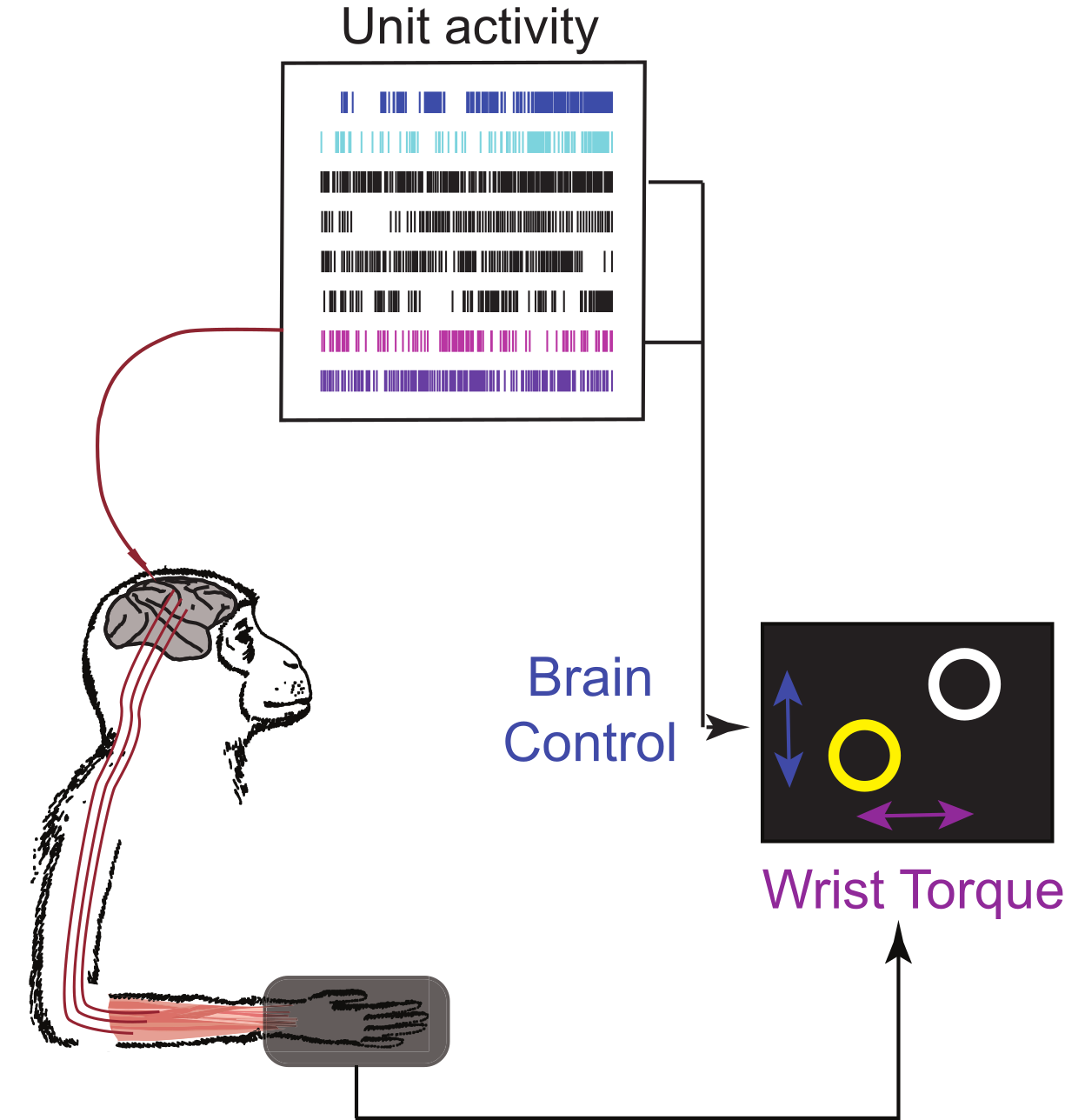New paper: Reconfiguring motor circuits for a joint manual and BCI task
Was excited to collaborate with Adrienne Fairhall and Chet Moritz at UW on advancing BCI technology with this ‘dual control’ BCI prototype.
Designing brain-computer interfaces (BCIs) that can be used in conjunction with ongoing motor behavior requires an understanding of how neural activity co-opted for brain control interacts with existing neural circuits. For example, BCIs may be used to regain lost motor function after stroke. This requires that neural activity controlling unaffected limbs is dissociated from activity controlling the BCI. In this study we investigated how primary motor cortex accomplishes simultaneous BCI control and motor control in a task that explicitly required both activities to be driven from the same brain region (i.e. a dual-control task). Single-unit activity was recorded from intracortical, multi-electrode arrays while a non-human primate performed this dual-control task. Compared to activity observed during naturalistic motor control, we found that both units used to drive the BCI directly (control units) and units that did not directly control the BCI (non-control units) significantly changed their tuning to wrist torque. Using a measure of effective connectivity, we observed that control units decrease their connectivity. Through an analysis of variance we found that the intrinsic variability of the control units has a significant effect on task proficiency. When this variance is accounted for, motor cortical activity is flexible enough to perform novel BCI tasks that require active decoupling of natural associations to wrist motion. This study provides insight into the neural activity that enables a dual-control brain-computer interface.

Lansdell B, Milovanovic I, Mellema C, Fairhall A, Fetz E, Moritz C IEEE Transactions in neural systems and rehabilitation engineering 2020 arXiv